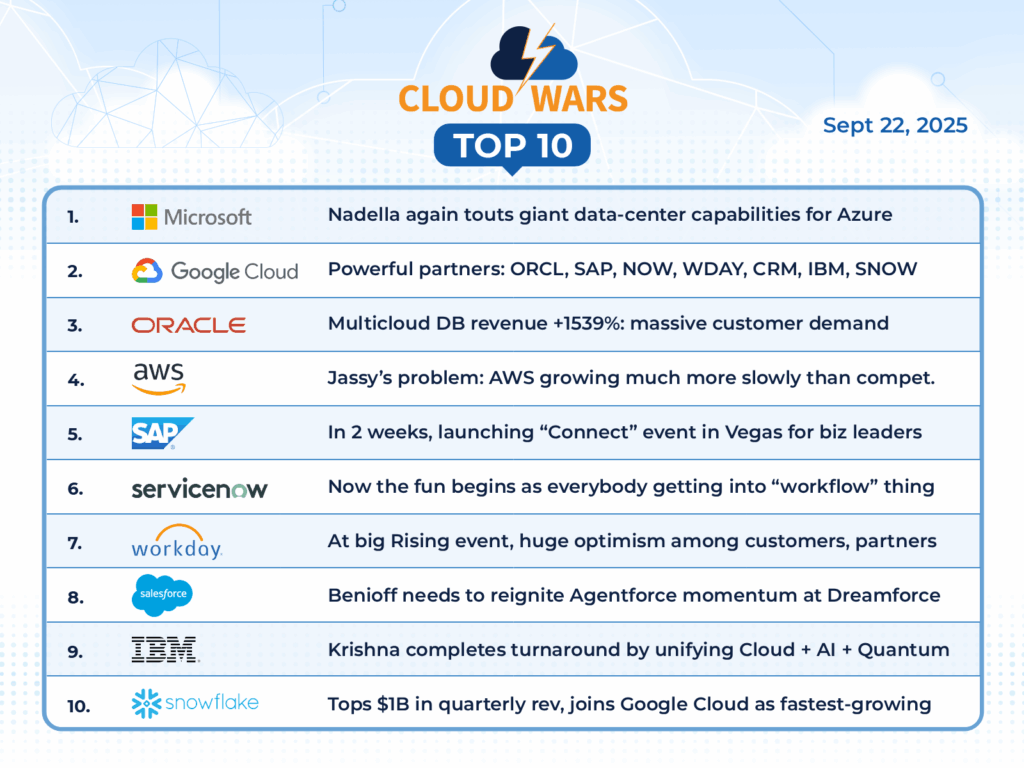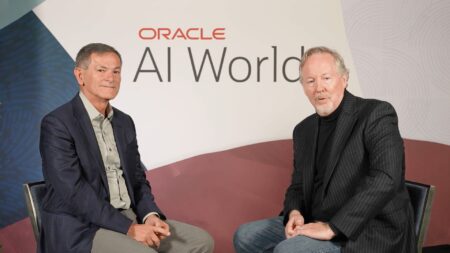
While various software vendors and ill-informed “experts” have spent the past 10-15 years trumpeting the arrivals of the latest “Oracle Database killer,” the Oracle Database business today is larger and faster-growing than ever before because it continues to give customers unmatched performance, choice, innovation, and value.
I’ll share in a moment the hard-core financial evidence provided in Oracle’s Q1 results, but first a quick look at history as a reminder of the eternal truth revealed many years ago in an episode of “Hill Street Blues”: “You can put your shoes in the oven, but that don’t make ’em biscuits.”
The biggest wave of these so-called “Oracle killers” — and I can’t decide if that term stands out more for its ignorance or its arrogance — was unleashed 10-12 years ago when the cloud-computing boom spawned loud but empty predictions of Oracle’s imminent downfall. These doomsday forecasts seemed to sprout up everywhere: from smack-talk billboards up and down Silicon Valley’s 101, to reality-warping research reports from short-sighted industry analysts eager to be liked by the hip kids, to ill-advised blathering from cloud-database competitors and investors whose egos were vastly out of proportion to their knowledge of the industry.
For example: in October of 2015, Oracle’s collapse was all but ensured when Business Insider came up with this one: “In one week, 1,000 companies have signed up for Amazon’s Oracle-Killer service.” And here’s the inside story from that article on that 10-year-old “Oracle Killer” from AWS:
A week ago, Amazon Web Services chief Andy Jassy stood onstage at the company’s annual tech conference and promised “freedom” to frustrated Oracle users. Now Amazon says that over 1,000 customers have already taken him up on the offer.
The “freedom” came in the form of a new tool called AWS Database Migration Service that helps these users jump ship from the Oracle database to Amazon’s competitor, Amazon Aurora, or to some of the other Oracle competitors that Amazon hosts on its cloud-computing service.
At the bottom of this article, I’ve shared a few additional examples from the fabulist “Oracle Killer” archives — and please trust me when I say there are many, many more.
Well, in spite of all those dire doomsday disclosures, poor little Oracle has somehow, some way, managed to not only overcome those existential threats but also reach a point where its database business is positively thriving as shown by these fiscal-Q1 results:
- revenue for cloud database services rose 32% to almost $700 million;
- Autonomous Database revenue was up 43%, accelerating sharply from the 26% growth reported in Q1 a year ago; and
- Oracle’s breakthrough multi-cloud partnerships with AWS, Google Cloud, and Microsoft are showing how the company is innovating not just on database technology but also on go-to-market strategies. In Oracle’s Q1 earnings-results press release, Chairman Larry Ellison said, “MultiCloud database revenue from Amazon, Google and Microsoft grew at the incredible rate of 1,529% in Q1. We expect MultiCloud revenue to grow substantially every quarter for several years as we deliver another 37 datacenters to our three Hyperscaler partners, for a total of 71.”

AI Agent & Copilot Summit is an AI-first event to define opportunities, impact, and outcomes with Microsoft Copilot and agents. Building on its 2025 success, the 2026 event takes place March 17-19 in San Diego. Get more details.
Not So Fast, Undertakers!
And as the AI Revolution takes hold and requires database vendors to innovate radically and rapidly, it looks like the undertakers conjured up so flimsily by Amazon CEO Andy Jassy (he was CEO of AWS back when he was prophesying Oracle’s doom), MongoDB CEO Dev Ittycheria, and plenty of others will have to cool their heels for years to come because no database vendor on Earth is better positioned for the AI Era than Oracle.
Describing the “multi-trillion-dollar market” for AI inferencing, Oracle chairman Larry Ellison used his recent fiscal-Q1 earnings call to make the case for Oracle Database 23ai:
We think we’re in a pretty good position to be a winner in the inferencing market because Oracle is by far the world’s largest custodian of high-value private enterprise data. With the introduction of our new AI database, we added a very important new way for you to store your data in our database: you can vectorize it. By vectorizing all your data, all your data can be understood by AI models. We made it very easy for our customers to directly connect all their new Oracle AI Databases and OCI cloud storage to the world’s most advanced AI reasoning models: ChatGPT, Gemini, Grok, Llama, all of which are uniquely available in the Oracle Cloud…. We’re the custodian of much more data than any of the application companies. They have their application data, and they measure their customers in tens of thousands. But we measure our customers in millions of databases. So we think we’re better positioned than anybody to take advantage of inferencing.
Some Thoughts from a True Expert
To provide some objective perspective on what’s actually going on in the world of databases, I asked my longtime friend and three-time colleague John Foley, editor of the excellent Cloud Database Report, to share some thoughts. Here’s what John sent to me via email:
Many challengers have tried to chip away at Oracle’s market leadership with purpose-built platforms like document databases or ones specializing in vector embeddings, graphs, search, and so on. But Oracle’s converged model, which does all that and more, remains a preferred choice among CIOs and other IT leaders because they don’t want the hassles and costs of managing a hodge-podge of one-off databases. As a result, Oracle’s cloud database services are growing robustly, while some would-be challengers are under pressure.
Oracle is building on its strong foundation with AI and multi-cloud. It offers choice of LLMs, natural language queries, the ability to combine structured and unstructured data in private models, and low-code development assisted by GenAI. And Oracle’s multi-cloud agreements with AWS, Google Cloud, and Microsoft have been game-changers in data architecture. Few rivals have anything like this one-two punch.
It’s interesting that, despite the fact that Oracle is nearly 50 years old, it has silenced any talk of being a legacy vendor. All of those years of development have resulted in scalability, reliability, security, and performance that are almost impossible for wannabes to match. Combine all that with OCI and Oracle engineered systems, and you can see why it’s so hard to knock Oracle off its perch.
And Now, Some Samples from the Fiction Section
As promised above, here but a few of the “Oracle Killer” examples:
- Diginomica, Nov. 2016: “MongoDB CEO claims to have won developers hearts from Oracle““30% of our business is migration off existing workloads to us. Two years ago it was 5%. Ditching Oracle and others, but mainly Oracle.” (MongoDB CEO Dev Ittycheria)
- Datamation, Sept. 2017: “MongoDB’s Mongo Moment” “We believe Oracle is incredibly vulnerable because they’ve lost the developer’s heart and soul.” (MongoDB CEO Dev Ittycheria)
- Business Insider, May 2018: The CEO of Amazon Web Services explains why it’s attacking Oracle’s core business so fiercely “[Jassy] mentioned Oracle by name as one of the big players that Amazon is trying to upend — making it very clear that it’s out for the kill in the database market.”
Final Thought
Now, as utterly goofy and detached from reality as all these “Oracle Killer” fables were and are, to some extent I don’t really blame the competitor executives who dreamed them up and gushed them out to the public. Those vastly smaller rivals wanted to get noticed, and so they very publicly yipped and yapped at The Big Dog, and many in the media lapped it all up.
The bigger point, I think, is that these absurd “Oracle Killer” fables offer a cautionary tale for business executives to bear in mind as the AI Revolution unfolds: while small challengers can have a lot to offer and provide the competitive fire that makes everybody better, the ones that scream the loudest about how they’re going to obliterate authentic leaders should be viewed with a great deal of skepticism.










